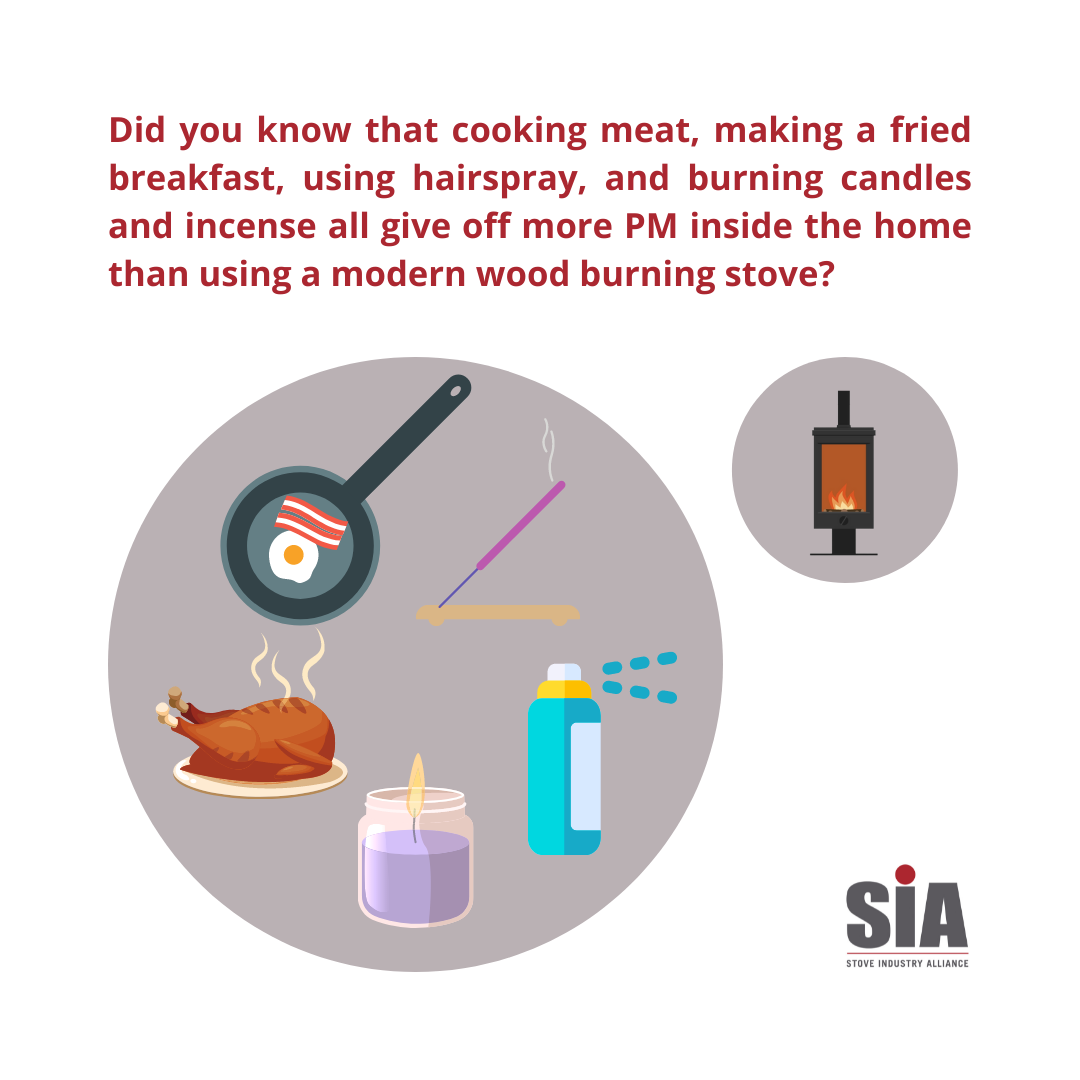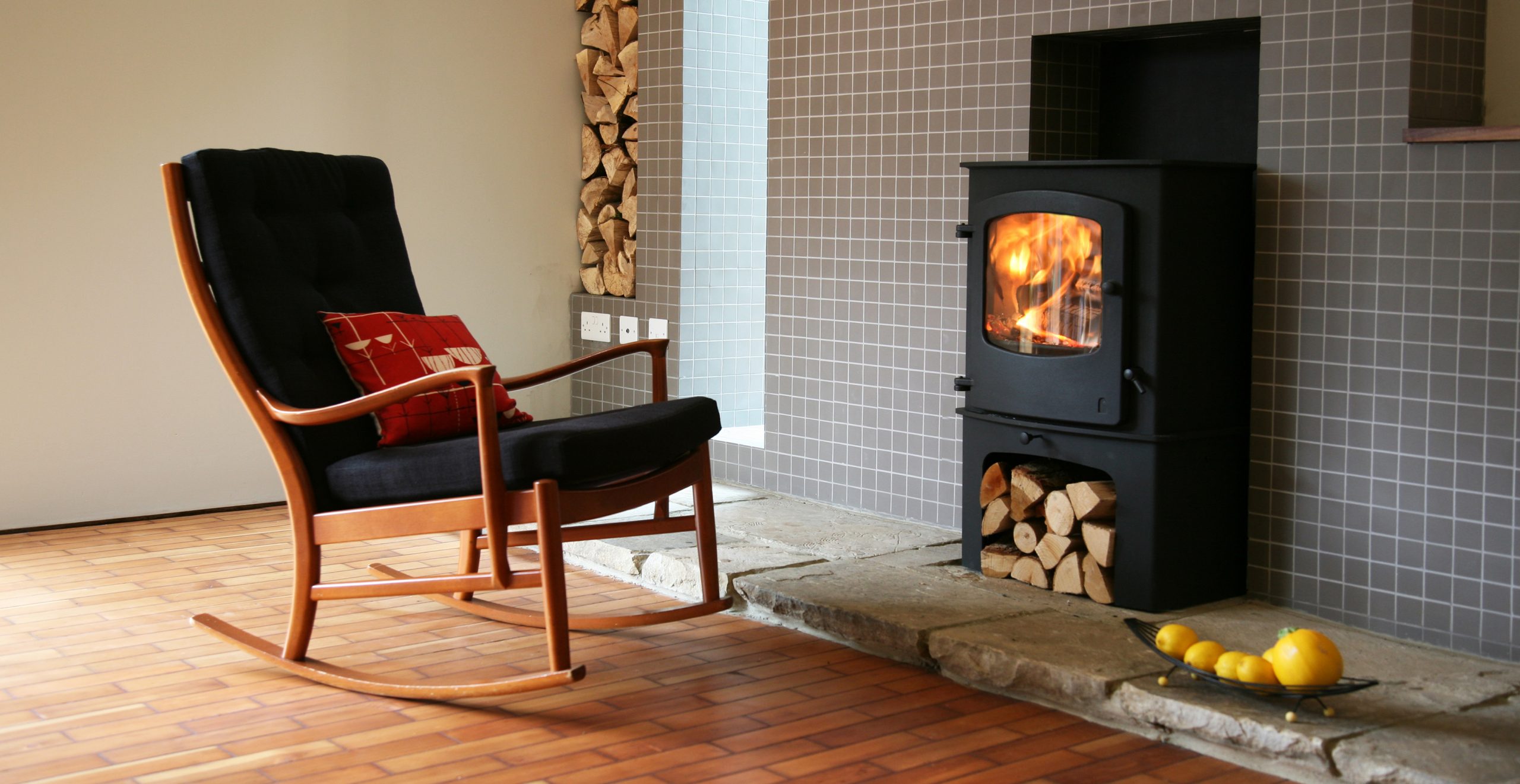The research and analysis show that there are higher levels of PM created inside the home from cooking than from modern wood burning stoves!
Read on to learn more about the report on indoor air quality associated with wood burning and get a new perspective on PM 2.5 in the home.
There has been much debate on the topic of indoor air quality and PM 2.5 emissions in relation to wood-burning stoves over the last few years. To get an accurate picture, the Stove Industry Alliance (SIA) commissioned a literature review looking at studies into the contribution from wood burning stoves to indoor particulate matter (PM). This looked at evidence from over 35 different studies into the impact on indoor air quality in the developed world from solid fuel combustion, including the 2020 study by Chakraborty et al, Indoor Air Pollution from Residential Stoves: Examining the Flooding of Particulate Matter into Homes during Real-World Use.

The report was undertaken by Dr Amanda Lea-Langton, senior lecturer in Bioenergy Engineering at the University of Manchester. We have listed some of the key findings below:
• No scientific evidence found for adverse health impacts from exposure to the indoor air
typically associated with modern, enclosed wood burning stoves
• No association shown between exposure to indoor wood burning and risk of asthma in
developed countries
• Use of modern wood burning stoves may help to improve air quality inside the home due to
the natural draught created during wood stove operation that pulls air from the room into the
appliance and from outside
• Other sources of particulate matter in the home, such as cooking, can release much higher
levels of PM compared to modern, enclosed wood burning stoves, and could therefore have
greater health risk potential
• In one study, oil-based cooking, such as frying food or grilling meat, had peak value PM
concentrations significantly higher than the WHO recommended average 24hr exposure limit
• In the same study the Ecodesign wood burning stove indoor air quality averages during
operation were below the WHO recommended limits
Not all stoves and wood-burning are equal!
A common misconception is that the use of wood-burning stoves is detrimental to our health due to their contribution to indoor air quality. This assertion often comes from conflating the performance of modern Ecodesign stoves with less sophisticated solid fuel combustion practices common in the developing world.
The findings in this report do not support this assertion and one broad literature review by a public body indicated that there was no association shown between exposure to indoor woodburning and the risk of asthma in developed countries. Additionally, a Manchester University study conducted in 2021 found that cooking, candles, incense, and hairspray all gave higher PM10 and PM2.5 readings than the use of a modern Ecodesign stove.
Also find out how domestic indoor wood-burning produces reduced emissions.
Wood-burning stove PM 2.5 best practices
The report recognises that indoor PM exposure for wood burning stove users peaks when refuelling and during ash removal. Andy Hill, chair of the SIA, advises ways that this can be easily mitigated:
“When refuelling a wood burning stove it is important to follow the manufacturer’s instructions. Refuel when the fire-bed has become glowing embers. Never simply swing the door open as this will lead to a rapid change in pressure within the appliance and may trigger some small escape of fumes (what was described as “flooding” in the 2021 Chakraborty study). Instead, by releasing the door catch and opening the door very slightly the air pressure will settle within a few seconds, then the door can be opened fully and more logs added. Similarly, with a little care any dust escape can be minimised during ash removal.”
The report gives information about reducing emissions even further:
“…those using wood burners could reduce their emissions by following improved firing and fuel practices. Recommendations for firing included the use of kindling or natural cubes rather than paper, cardboard or newspapers; stacking according to the Swiss method with largest logs at the bottom; wood moisture to be between 10-20% and use of a hard wood fuel (e.g. beech, oak) rather than softwoods or prunings. This led to improved combustion and hence lower emissions so reduced the risk of exposure.”
Explore more on why burning the right wood protects the environment.
Modern wood-burning stoves are safe
This report gives valuable insight into how everyday household activities contribute to PM 2.5 emissions in the home. It accurately highlights the major contributors and crucially shows there is no scientific evidence linking adverse health impacts from exposure to PMs in indoor air and the use of modern wood burning stoves.
When considering the many benefits of a modern wood-burning stove to wellbeing, the fuel crisis, and environment it is wonderful news that people can now confidently enjoy all these benefits safely.
Why Choose Us?
At Charnwood Stoves, our team stand at the forefront of innovation, committed to elevating your home environment. Our unwavering dedication to excellence is exemplified in every aspect of our products. Choose us for a harmonious blend of cutting-edge technology, sustainability, and design finesse.
Experience peace of mind knowing that our wood burning stoves prioritise indoor air quality. The recent PM report showcased our commitment to transparency and your well-being. Trust Charnwood Stoves for the most reliable, efficient, and environmentally conscious heating solutions.
With Charnwood Stoves, you’re not just selecting a product; you’re embracing a lifestyle. Join a community that values craftsmanship, functionality, and a greener future. Elevate your living space with Charnwood Stoves — where quality meets a passion for a healthier, warmer home.
The report, which can be downloaded in full via the link below, was commissioned by the SIA and has been independently peer reviewed by Prof Alan Williams, CBE FREng FRSC, Emeritus Professor in Combustion, The University of Leeds.
https://stoveindustryalliance.com/wp-content/uploads/2022/04/22-04-11-Indoor-air-final-V5-AL.pdf

